How Can Oxycodone Affect You?
Oxycodone is a semi-synthetic opioid derived from the opium poppy. It can be made from either codeine or thebaine, both of which are alkaloids found naturally in the sap or latex of the unripe poppy seed heads. Most pharmaceutical companies produce oxycodone through a rather simple chemical process involving thebaine. The thebaine molecule is quite structurally close to that of oxycodone’s. Only two basic steps are required to convert thebaine into oxycodone. Oxycodone is a powerful opioid and extremely effective at relieving even severe pain. This article will discuss the following question: How can oxycodone affect you?
Oxycodone, Thebaine and Papaver Opium Poppies
A number of major pharmaceutical companies making generic oxycodone for medical use own immense poppy fields in foreign countries like India, Australia, Tasmania, Spain, Holland and Morocco. These poppies are bred to contain very high amounts of the thebaine needed to make oxycodone. This is important because Papaver somniferum poppies, a species that contains morphine, thebaine and codeine, are typically very low in thebaine.
By breeding P. somniferum and related poppies high in thebaine and low in morphine, pharmaceutical companies get the thebaine they need while at the same time discouraging the theft and use of these poppies to make heroin. Low-morphine poppies are not attractive to heroin traffickers. Thebaine itself has no opioid effect properties. In fact, it’s more of a very unpleasant psychedelic drug than anything else.
When was Oxycodone First Discovered?
Oxycodone was first prepared from thebaine in Germany in 1916 by a chemist trying to make a non-addictive pain medication. By this time, morphine and opium’s addictive qualities were well-known. In fact, another German chemist had tried to make another non-addictive painkiller some 20 years earlier. It was called heroin and soon proved to be even more addictive than the morphine it was made from.
Oxycodone was released quickly onto the German medical market soon after its discovery. It proved to be an extremely effective analgesic with a stellar oral BA of up to 88 percent. The BA of a drug is the abbreviation of its bioavailability. This refers to the percentage of a taken dose that actually reaches the brain or target organ.
Most drugs, especially opioids, have a far lower BA of typically 50 percent or less. For example, oxymorphone’s BA is barely 10 percent! The BA directly affects a drug’s actual and perceived potency and is related to its addiction risk.
Today, we know that oxycodone is one of the most addictive oral opioids ever created. Its oral effectiveness is unusual among opioids as a class. This is partly due to its resistance to detoxification by the liver, allowing most of the dose to reach the brain intact and at pretty much the same time.
This has a lot to do with why the drug is both so effective and so abusable. The more drug that reaches the brain’s mu opioid receptors, the stronger the effect. This means more euphoria and more of a nod. A nod is a pleasant, dreamlike state that follows the initial euphoria of an opioid.
In general, all opioids produce their desired effects by binding to one or more of the brain’s three main opioid receptors: The mu, the delta and the kappa. Here, reactions between the receptors and the brain’s cells and chemical messengers, called neurotransmitters, lead to feelings of well-being, pleasant sedation, relaxation, relief of anxiety and insomnia and euphoria. There is some question as to oxycodone’s exact interaction with the kappa opioid receptor. Many scientists believe that oxycodone doesn’t activate this receptor at all and is primarily a mu receptor specialist. The mu is the receptor most strongly linked to addiction, euphoria, overdose and sedation.
Oxycodone Side Effects
Common side effects include:
- Nausea, vomiting and severe constipation
- Itching
- Difficulty urinating
- Sweating
- Pinpoint pupils
- Confusion
- Dizziness
- Mental clouding
Less commonly, oxycodone can cause:
- Swelling of the legs and feet
- Blood in the urine
- Fever
- Fainting
- Flushing
- Hiccups
If too much is taken, oxycodone can cause difficulty breathing, cold and clammy skin, bluish skin discoloration, especially of the fingernails and around the mouth, unconsciousness, coma and death.
Call us for Help
If you’re struggling with oxycodone addiction, know two things: You’re not alone, and you will need help to get your life back on track. Also know that you’re not weak, and addiction isn’t your fault. It’s just that you need professional help to stop an addiction this powerful. Call us anytime at 424-499-2603 for help, hope and referrals to treatment options in your area that really work.
We offer more than a recovery program, offer an experience.
© 2021 California Centers for Recovery. All Rights Reserved.
